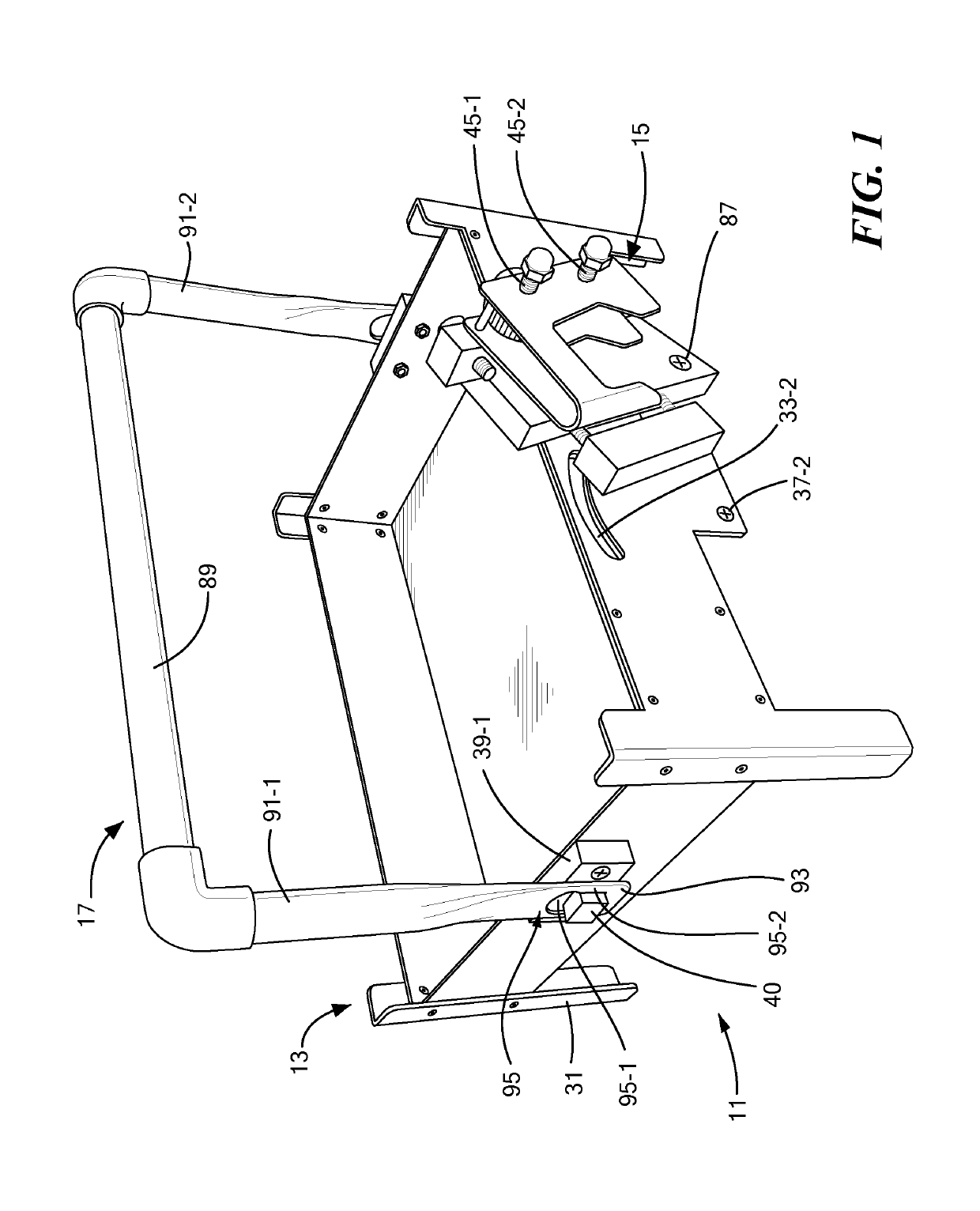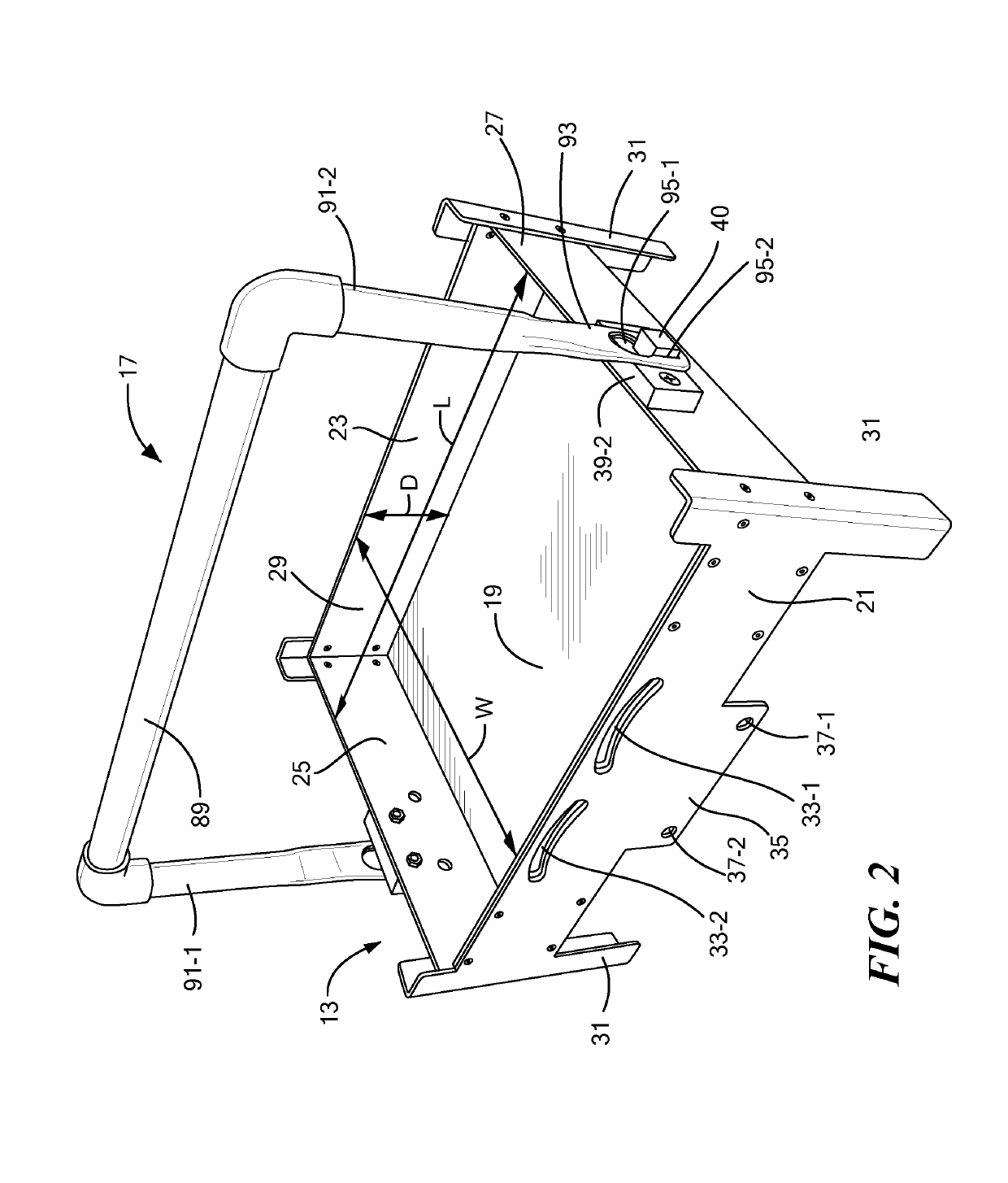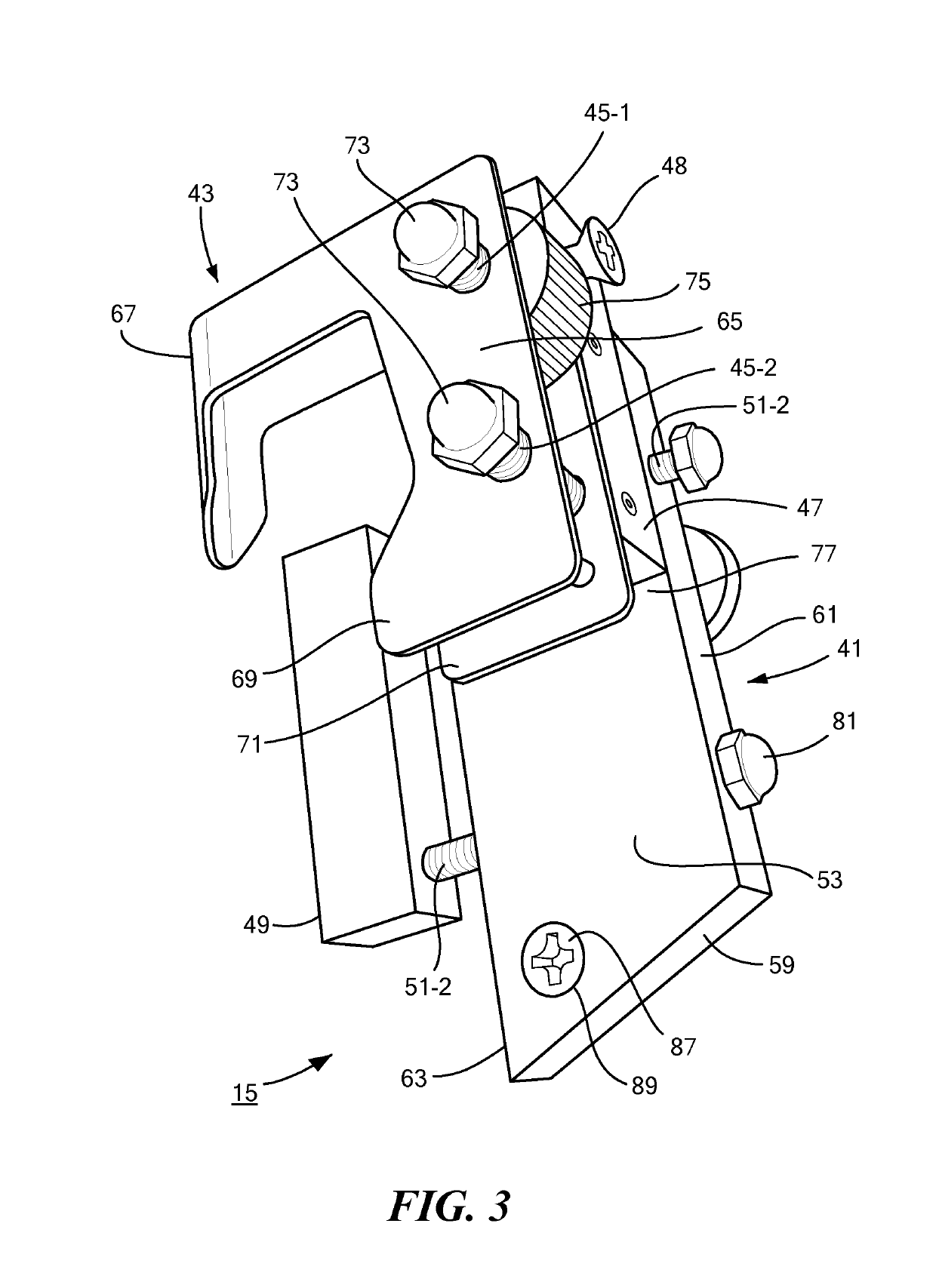Detachable tray for a ladder
a technology of ladders and trays, applied in the field of ladders, can solve the problems of increased risk, high cost, high labor intensity, and limited access to supplies by people, and achieve the effects of convenient loading and unloading of equipment, convenient transportation, and low cost of manufactur
- Summary
- Abstract
- Description
- Claims
- Application Information
AI Technical Summary
Benefits of technology
Problems solved by technology
Method used
Image
Examples
Embodiment Construction
Construction of Tray 11
[0026]Referring now to FIG. 1, there is shown a front perspective view of a tray for retaining supplies, the tray being constructed according to the teachings of the present invention and identified generally by reference numeral 11. As will be described in greater detail below, tray 11 is designed to be removably mounted onto a conventional ladder in a simple and efficient manner, thereby providing a user positioned on the ladder with readily available access to the supplies collected thereon. As a principal feature of the present invention, tray 11 can be adjusted, as needed, to allow for its reliable and stable securement to a wide variety of different ladder shapes and styles.
[0027]As defined herein, use of the term “supplies” denotes any tool or material that is commonly utilized by a worker disposed on a ladder. Specific examples of supplies which may be retained by tray 11 include, but are not limited to, paint products, paint tools, hand tools, power t...
PUM
 Login to View More
Login to View More Abstract
Description
Claims
Application Information
 Login to View More
Login to View More - R&D
- Intellectual Property
- Life Sciences
- Materials
- Tech Scout
- Unparalleled Data Quality
- Higher Quality Content
- 60% Fewer Hallucinations
Browse by: Latest US Patents, China's latest patents, Technical Efficacy Thesaurus, Application Domain, Technology Topic, Popular Technical Reports.
© 2025 PatSnap. All rights reserved.Legal|Privacy policy|Modern Slavery Act Transparency Statement|Sitemap|About US| Contact US: help@patsnap.com



